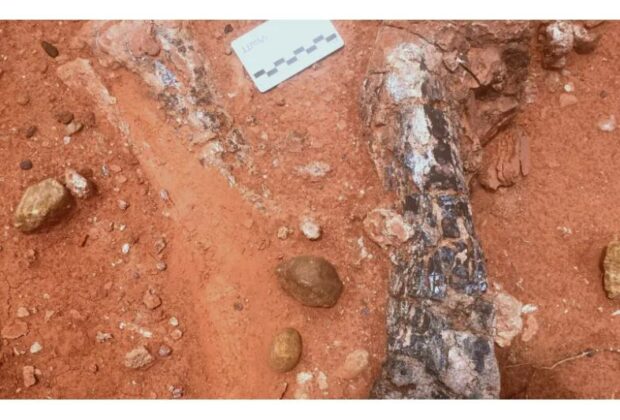Musankwa sanyatiensis, a newly discovered dinosaur species, was found in Zimbabwe.
Researchers have designated Musankwa sanyatiensis as a new dinosaur species as a result of an amazing fossil discovery in Zimbabwe’s Lake Kariba.
According to a study published in Acta Palaeontologica Polonica on Thursday, the fossilized remains of the species’ sole hind leg, including its thigh, shin, and ankle bones, were found lodged into a rock at the lake’s coastline.
According to researchers, the remains are from around 210 million years ago, during the Late Triassic period.
Researchers have discovered that Musankwa Sanyatiensis belongs to the Sauropodomorpha group of long-necked dinosaurs that existed in the Late Triassic period.
In a press release for the study released on Thursday, Dr. Kimberley “Kimi” Chapelle, an assistant professor at Stony Brook University and an honorary associate at the Evolutionary Studies Institute at Wits, stated, “Despite the limited fossil material, these bones possess unique features that distinguish them from those of other dinosaurs living at the same time.”
Musankwa Sanyatiensis is the fourth dinosaur species to be identified in Zimbabwe, according to its discovery.
According to the news release, earlier discoveries from the African country include Syntarsus rhodesiensis in 1969, Vulcanodon karibaensis in 1972, and Mbiresaurus raathi in 2022.
Professor Paul Barrett of the Natural History Museum in London oversaw the study, which was carried out by researchers from the University of the Witwatersrand (Wits) in South Africa, the Natural History Museum of Zimbabwe, and Stony Brook University in New York.
A man in France walking his dog in March 2024 found a 70 million-year-old fossil that turned out to be almost the whole skeleton of a long-necked titanosaur.
The enormous skeleton was discovered by Damien Boschetto in the Montouliers forests, close to his Cruzy, a community in southern France.








